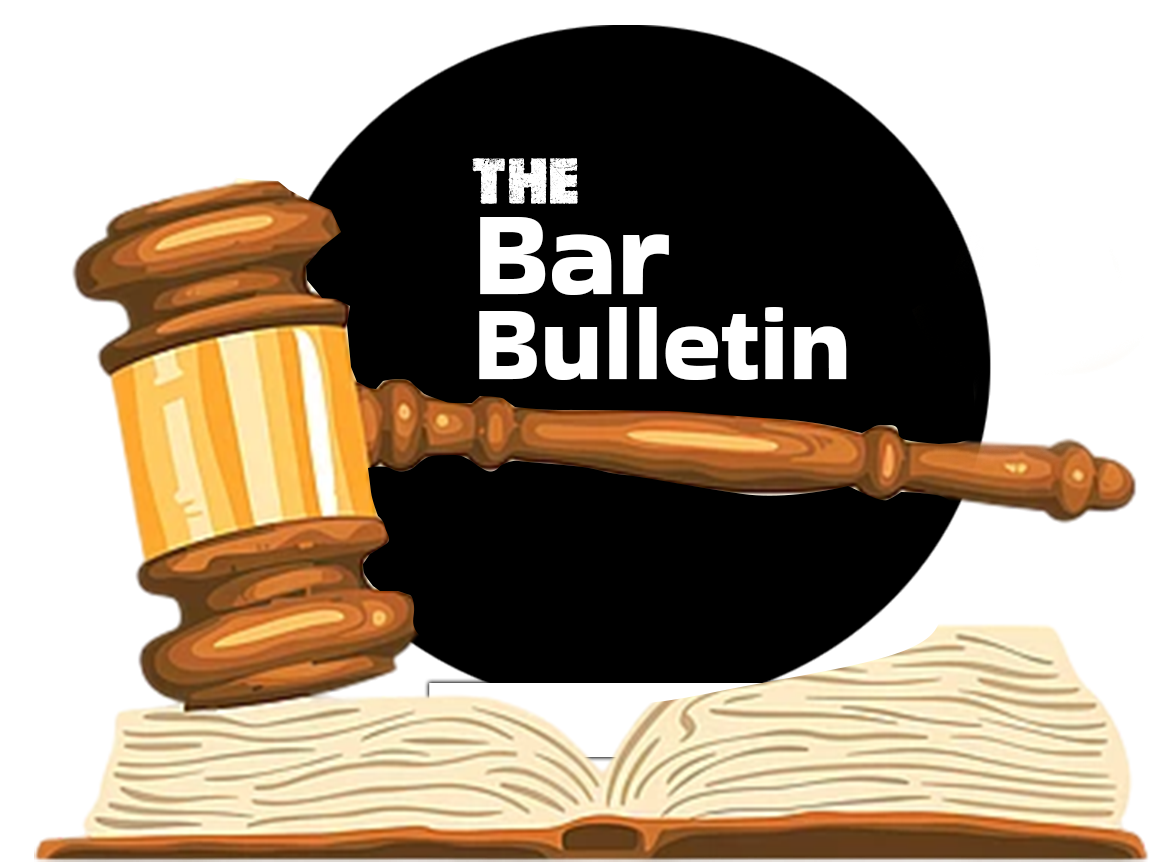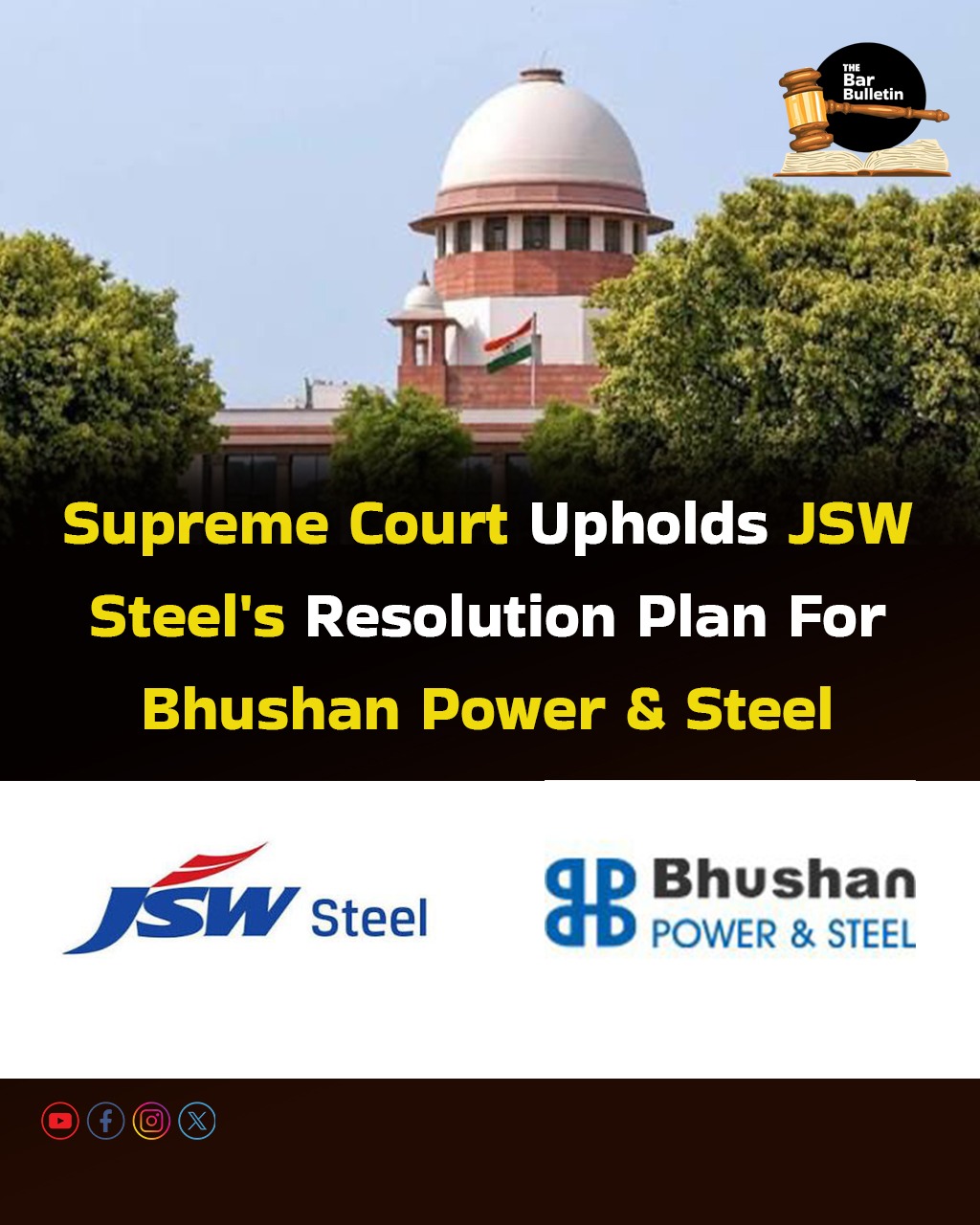The Supreme Court of India delivered its judgment on 26 September 2025, in the matter of Kalyani Transco vs Bhushan Power and Steel Limited. This case involves the corporate insolvency resolution process of Bhushan Power and Steel Limited (BPSL), a company identified as a major loan defaulter under the Insolvency and Bankruptcy Code, 2016 (IBC).
The Court was called upon to decide the validity of the resolution plan submitted by JSW Steel Ltd, which was approved by the Committee of Creditors (CoC), the National Company Law Tribunal (NCLT), and subsequently, the National Company Law Appellate Tribunal (NCLAT). The appeals were filed challenging this approval by the erstwhile promoters of BPSL and certain operational creditors.
The Supreme Court Bench comprising Chief Justice B.R. Gavai, Justice Satish Chandra Sharma, and Justice K. Vinod Chandran ultimately dismissed all the appeals, upholding the approval of the resolution plan by JSW Steel Ltd.
Case Background and Timeline
BPSL was identified by the Reserve Bank of India (RBI) as one of the “dirty dozen”, a list of twelve large corporate defaulters with outstanding loans exceeding Rs. 5,000 crores. Following this designation, Punjab National Bank (PNB), as a financial creditor, filed a petition under Section 7 of the IBC before the NCLT, New Delhi, to initiate Corporate Insolvency Resolution Process (CIRP) against BPSL. The petition was admitted on 26 July 2017, marking the start of insolvency proceedings.
During the CIRP proceedings, thirteen potential resolution applicants including JSW Steel submitted formal resolution plans. CoC, after evaluation through a prescribed matrix and negotiations, selected JSW Steel’s plan as the highest evaluated and hence the Successful Resolution Applicant (SRA).
On 5 September 2019, the NCLT approved JSW Steel’s resolution plan, subject to certain conditions. The plan involved JSW Steel taking control of BPSL’s assets with a timeline to infuse equity and settle claims owed to financial and operational creditors.
However, the plan’s approval was challenged by the erstwhile promoters of BPSL and some operational creditors, citing procedural irregularities, delay in payments, questionable claim classifications, and regulatory hindrances, such as the Enforcement Directorate’s (ED) provisional attachment orders under the Prevention of Money Laundering Act (PMLA).
The NCLAT, on 17 February 2020, heard and disposed of the appeals filed against the NCLT order. In its judgment, the NCLAT upheld the approval of the resolution plan by the NCLT, though it allowed certain modifications, particularly relating to the timeline of the plan’s implementation, permitting extensions granted by the CoC following a 66% majority vote.
Subsequently, multiple appeals against the NCLAT’s decision were filed in the Supreme Court by the appellants. These appeals raised various issues under Sections 61 and 62 of the IBC, principally attacking the legitimacy of the approval process, the classification of claims, and the delayed disbursal of payments under the resolution plan.
The Supreme Court heard the case over several sessions, reserved its judgment on 11 August 2025, and pronounced its final decision on 26 September 2025.
Details of Appeals Filed
The batch of six civil appeals was primarily filed by the erstwhile promoters of BPSL and several operational creditors, collectively referred to as the appellants. They challenged the common impugned judgment and order dated 17 February 2020, passed by the NCLAT,which confirmed the NCLT’s approval of the JSW Steel resolution plan.
The appellants contended that the resolution plan was flawed due to delays in implementation, opaque clauses allowing timeline modifications, incorrect claim classifications, and violations of statutory provisions governing prioritization of payments to creditors.
Arguments of the Appellants
First, the appellants challenged the claim classification methodology used by the CoC, focusing sharply on the treatment of the claim filed by Jaldhi Overseas Pte Ltd. They argued that classifying Jaldhi’s claim as ‘contingent’ rather than ‘crystallized’ resulted in wrongful exclusion from operational creditor payments, thereby violating their rights under IBC.
Second, regarding the timeline for implementation, the appellants contended that the resolution plan’s clause permitting extensions of implementation deadlines rendered the plan open-ended and indefinite. They claimed that this was contrary to the strict, time-bound scheme of the IBC, specifically Section 12, which mandates a resolution timeline of up to 330 days, after which liquidation should ensue.
Third, the appellants decried delays in paying operational creditors, with some payments deferred by over 900 days after plan approval. They contended that such delays violated provisions under the IBBI CIRP Regulations which prioritize timely payments to operational creditors in insolvency proceedings.
Fourth, the appellants contended that the ED’s attachment of BPSL’s assets under PMLA was wielded as a shield by JSW Steel and the CoC to justify unwarranted delay and dilute accountability, thereby undermining the resolution process.
Lastly, the erstwhile promoters argued that their personal guarantees on BPSL loans gave them locus standi and vested interests under Sections 61 and 62 of the IBC to challenge the resolution plan and seek redressal against perceived injustices.
Arguments of the Respondents
JSW Steel and CoC vigorously defended the approval and implementation of the resolution plan. They submitted that the classification of claims including that of Jaldhi Overseas was a matter entrusted to the commercial wisdom and discretion of the CoC. The respondents stressed that courts should abstain from interfering in CoC decisions unless it is shown that the classification was patently illegal, arbitrary, or outside the bounds of reason.
On the timeline and delay issue, the respondents justified the extended implementation timelines on grounds of regulatory actions beyond their control. They argued that the provisional attachment orders issued by ED impeded JSW Steel’s ability to take control and execute the resolution plan expeditiously. Therefore, the clause permitting timeline extensions, supported by a requisite 66% majority in the CoC, was crucial for pragmatic governance of complex insolvency processes.
Regarding payment prioritization, JSW Steel and the CoC submitted that the schedule complied fully with the IBC and associated regulations. Partial and staggered payments to operational creditors arose from liquidity and enforcement constraints, and served commercial objectives of maximizing overall asset value.
The respondents further argued that erstwhile promoters lacked the locus standi to obstruct or delay the resolution process once insolvency proceedings commenced, their role being fundamentally curtailed under the IBC’s object of expeditious corporate revival.
The respondents cautioned against judicial micromanagement of insolvency processes under the guise of reviewing commercial decisions, noting that IBC’s jurisprudence protects CoC’s business judgment from undue interference.
Issues for Determination
After considering the parties’ submissions, the Supreme Court crystallized the following principal issues for adjudication:
Judicial Reasoning and Discussion of Issues
The Supreme Court reaffirmed the established principle that the commercial wisdom exercised by the CoC in classifying claims is sacrosanct and immune from judicial interference unless there is a clear showing of illegality or arbitrariness. Citing precedents such as the Committee of Creditors of Essar Steel India Limited v. Satish Kumar Gupta, the Court upheld the CoC’s decision to classify the claim of Jaldhi Overseas as contingent, which justified excluding it from priority payments under the resolution plan.
Acknowledging the statutory timeline under Section 12 of the IBC, which mandates CIRP completion within 330 days (including extensions), the Court identified that JSW Steel’s resolution plan faced significant delays in implementation largely caused by external regulatory factors beyond their control, such as ED’s attachment of assets. The Court held that the clause in the resolution plan permitting extension of implementation deadlines upon 66% CoC approval was valid and necessary to accommodate these contingencies. Mere delay did not suffice to vitiate an otherwise lawful and statutorily compliant resolution plan.
While recognizing the erstwhile promoters as ‘persons aggrieved’ under Section 61 of the IBC by virtue of their guarantees and vested interests, the Court clarified that their entitlement is circumscribed. The promoters cannot obstruct or undermine an approved resolution plan absent prima facie justification demonstrating procedural irregularity, illegality, or prejudice. The Court considered their appeals on merits but consistently rejected attempts to delay or defeat the resolution process without lawful grounds.
The Court confirmed that the resolution plan conformed with the payment hierarchy envisaged under the IBC. The plan provided for priority to financial creditors over operational creditors, consistent with Section 30(2) of IBC and Regulation 38 of the IBBI CIRP Regulations. Incremental or partial payments to operational creditors were deemed permissible, particularly when liquidity constraints arose from external factors. The resolution plan’s provisions governing payment sequencing were found neither violative of law nor unfair to operational creditors.
Reiterating constitutional and jurisdictional limits, the Court underscored that judicial review under the Insolvency and Bankruptcy Code is restricted primarily to questions of law or patent illegality. The commercial decisions taken by the CoC, including approval, classification of claims, and timeline extensions, are entitled to deference. Courts do not substitute their judgment for that of the CoC’s business wisdom unless such decisions are egregiously unlawful or irrational, a standard not met here.
The Court acknowledged the valid exercise of statutory functions by the ED in attaching assets for enforcement under the PMLA. While such attachments complicated possession and delayed plan implementation, they did not invalidate the resolution process. The Court emphasized the necessity of balancing regulatory enforcement with the IBC’s objective of expedient corporate revival. The ED’s actions, though causative of delay, were not held to frustrate or render the resolution plan unlawful.
Final Ruling and Directions
The Supreme Court, after meticulously examining all contentions and the legal framework, dismissed all appeals challenging the NCLAT’s approval of JSW Steel’s resolution plan.
The Court directed the continuation of the resolution plan’s implementation in accordance with its terms and applicable statutory provisions. The question relating to the distribution of Earnings Before Interest, Taxes, Depreciation, and Amortization (EBITDA) was left open for future adjudication, reflecting prudence and respect for the developmental nature of insolvency law.
Legal and Practical Significance
The judgment marks a definitive affirmation of the foundational principles of India’s insolvency framework. By striking a balance between strict procedural adherence and necessary flexibility for enforcement-related delays, the Court has reinforced confidence in the resolution process. The ruling prevents protracted post-approval litigations that could undermine creditors’ interests and corporate revival.
The decision also clarifies the role and rights of erstwhile promoters under the IBC, preventing their obstructive litigation tactics without stripping legitimate rights. This case is expected to serve as a key precedent shaping governance, accountability, and legal standards in large and complex insolvency resolutions in India going forward.
Tally of Jurisprudence
Cases Relied On
Cases Referred To
Cases Distinguished

